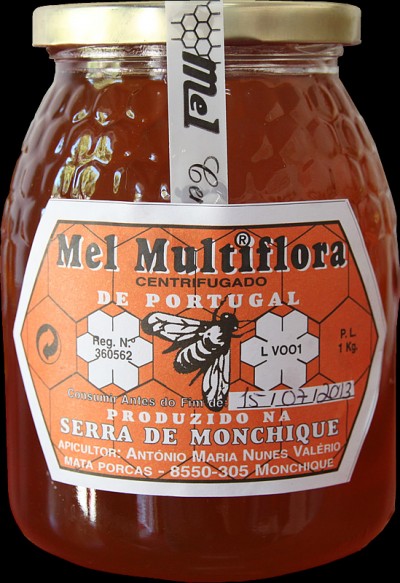Description: The Mel da Serra de Monchique PDO is a honey from the Apis mellifera Iberica species of bee. It is made from the nectar of a variety of local flowers, principally lavender, heather, eucalyptus, orange blossom, plum and medronho, plant of the Ericacea family and Arbutus unedo specie.
Production method: No artificial feeding of the bees is permitted for the production of Mel da Serra de Monchique PDO honey. The hives may only be washed and disinfected during the change over period. The honey can only be extracted and bottled in the area of production. Harvesting takes place from May to July, leaving the months of September and October as rest periods. The honey is purified by a filtering process; it is centrifuged and, lastly, bottled.
Appearance and flavour: Mel da Serra de Monchique PDO honey is dark yellow in colour and has an average level of crystallisation. It is delicately flavoured and particularly rich in natural mineral salts.
Distinctive features: Mel da Serra de Monchique PDO has a distinctive slightly bitter after taste given it by the pollen from the medronho, which produces a fruit similar to the strawberry and the mulberry and which grows in abundance in the Serra de Monchique region
Production area: Mel da Serra de Monchique PDO is made in the municipal areas of Monchique, Aljezur, Lagos, Portimão and Silves, in the district of Faro.
History: The tradition of bee keeping in the area where Mel da Serra de Monchique PDO honey is produced has ancient origins. Already in the 17th and 18th centuries it was one of the principle sources of income in the region, together with the keeping of livestock, fruit growing and wine making. The Romans were mostly responsible for its introduction when they arrived in the Algarve and they very much promoted beekeeping in the Monchique spa area
Product specification (pdf)
Publication in EU official journal
Regulamento (CE) n.º 1107/96 da Comissão de 12.06.1996 - L 148/1



